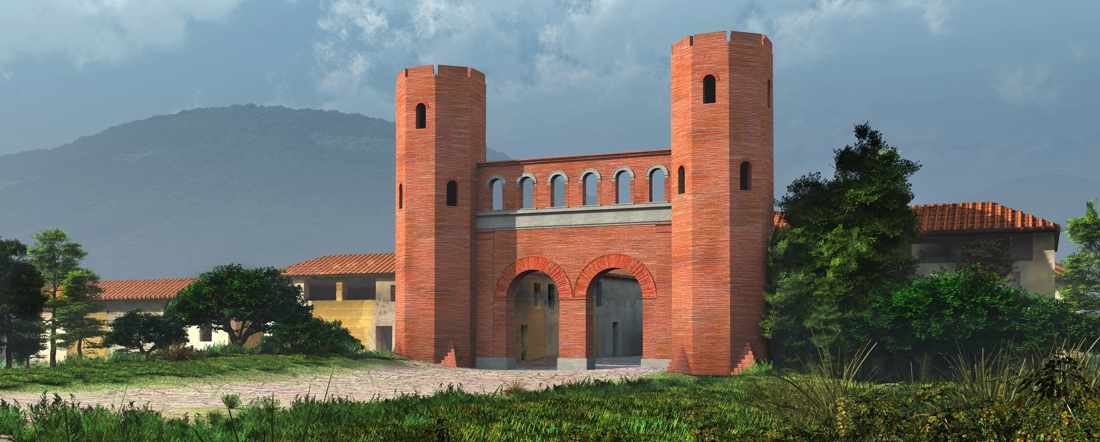
The Urban Gates
The urban gates were the entrance to the town. Though Libarna was not provided with urban walls, gates were still built at the northern and southern edges of the cardo maximum to define the urban space.
At Libarna an urban gate is known along the southern stretch of the via Postumia. Evidence shows that an analogous one stood on the northern entrance of the town.
The plan matches the widespread model of the “cavaedium gate” characterized by a wall curtain with an opening flanked by two towers. The opening often had double sections to allow the traffic in both directions; in some cases there were also “minor” pedestrian passageways. The entrance led to a courtyard for the guard with the second wall facing the city, to create a veritable fortress.
Since Libarna was not provided with urban walls, its perimeter was symbolically marked by the gates.
Most Roman towns were enclosed by walls, whose function was not only defensive but also ideological. The city wall divided the town, urbs, from the not-urban space, that is the ager, as well as the civilized area (urbanitas) from the wilderness (feritas). The foundation of a town, through the act of tracing its perimeter, was a sacred performance, as evidenced by the legend of Romulus. The walls themselves were sacred: it was forbidden to cross them, unless through their apposite openings, that is the gates.
These therefore undertook a certain monumentality connected to their sanctity and sometimes were richly decorated, with architectural elements related to sacred architecture.
Usually the gates were located at intersections with main roads, cardo maximus and decumanus maximus, but not only: minor entrances might have stood also along minor axes.
Over time, with the introduction of peace and prosperity (essentially from the Augustan period), the gates acquired civic values, more than defensive aims, also in their appearance. The structures became lighter, with an embellished look. In some extreme cases, in the lack of urban walls which were not necessary any longer, isolated gates were built as a symbolic sign of urbanitas. This is the case, for instance, of Augusta Bagiennorum / Benevagienna (province of Cuneo) and Libarna.


 Italiano
Italiano Français
Français